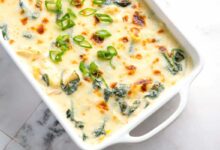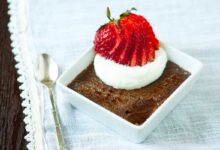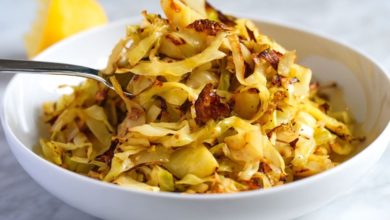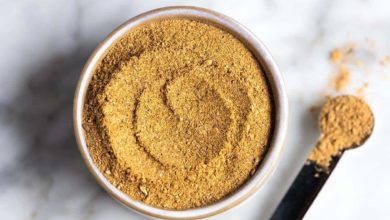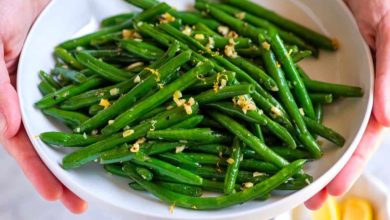How to make pita bread that beats anything you can buy at the store. Bake these in the oven and watch them puff like clouds for perfect pita pockets. Or, cook them in a skillet for soft and fluffy flatbread. Easy recipe with lots of tips below!
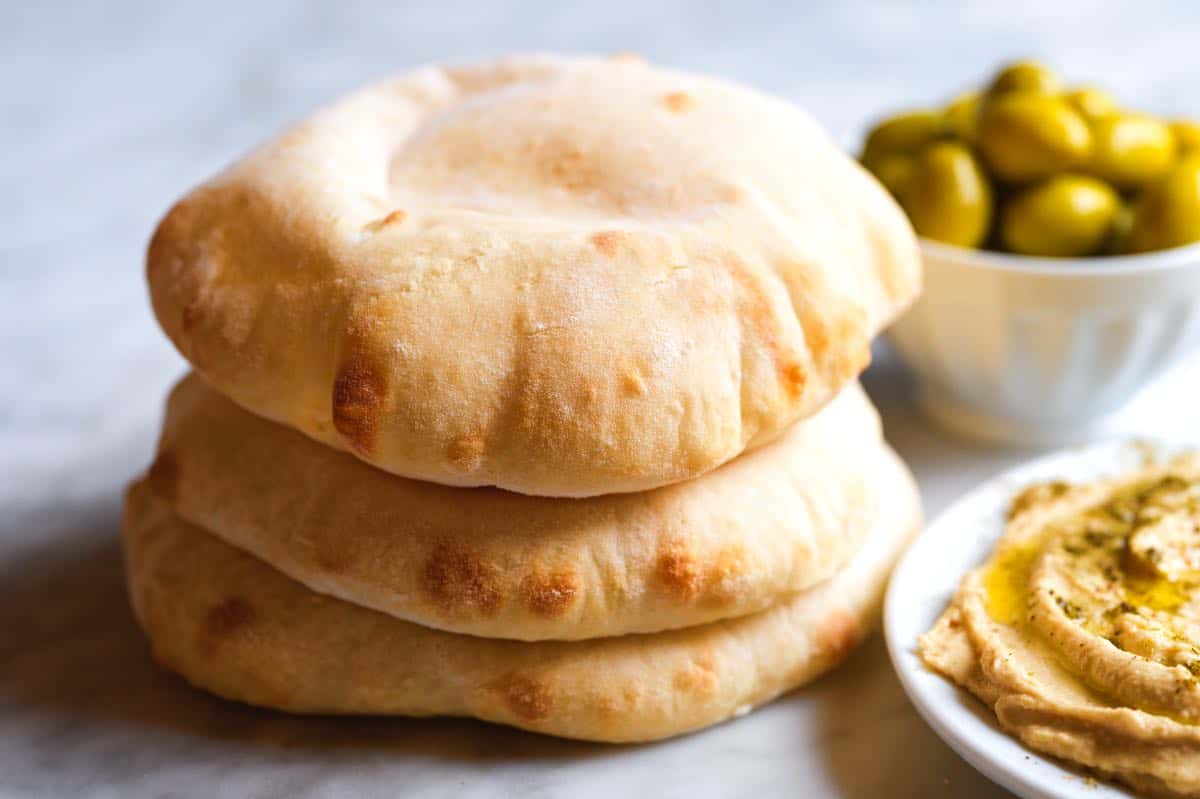
Since learning this easy pita bread recipe from Chef Richard, we’ve made it almost every weekend. These homemade pita cook up to be soft and fluffy, and when baked in the oven, have the perfect pita pocket for stuffing with hummus, falafel, and more!
We’ve been searching for a great recipe for pita bread for a while now, and we’ve found it. We’ve already shared our easy flatbread, which uses baking powder. This pita recipe swaps the baking powder for yeast, which makes the pita taste amazing and helps with that airy pita pocket.
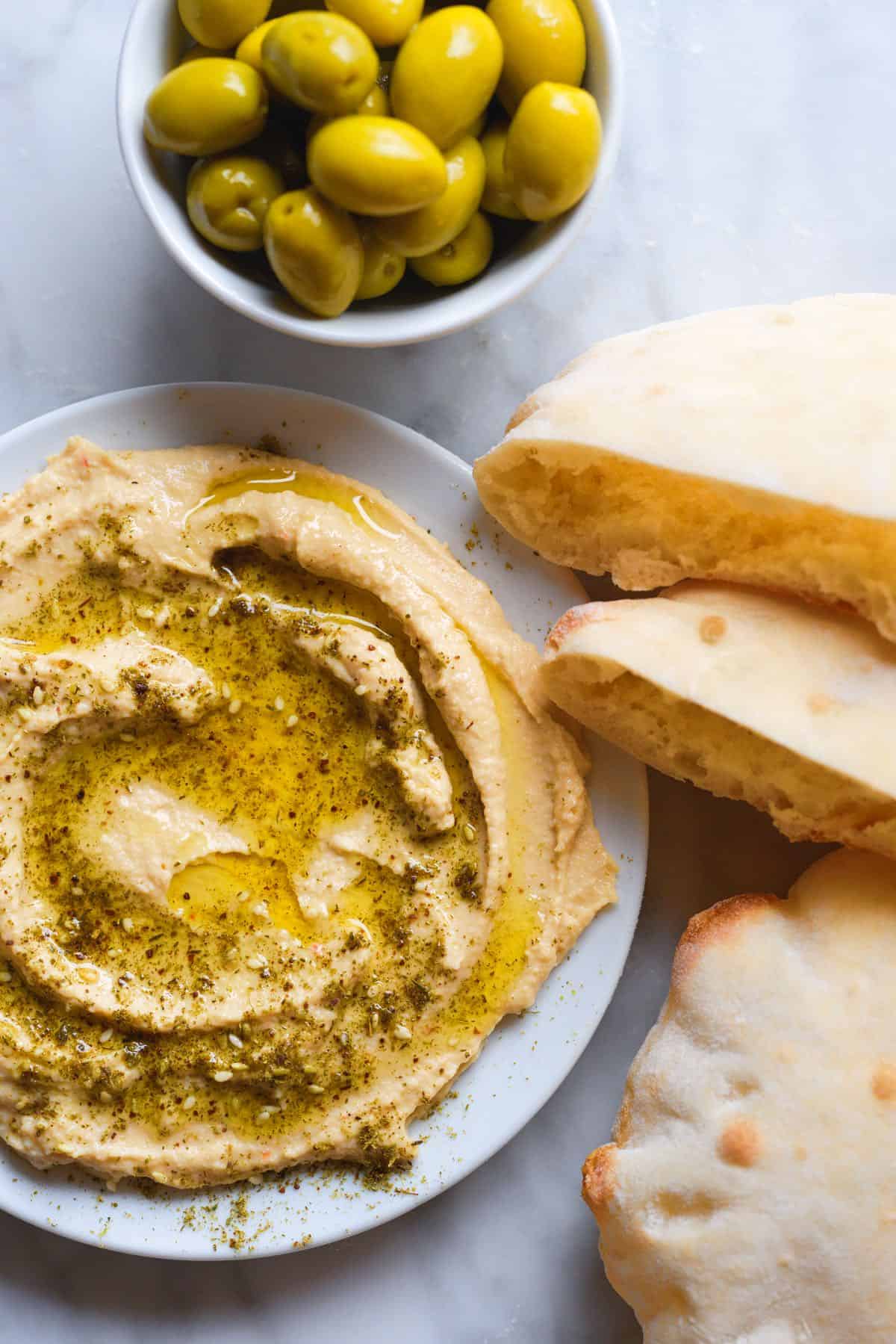
How to make pita bread
Forget store-bought pita bread and bake your own pillowy pita pockets at home! With just a few simple ingredients — flour (all-purpose or bread flour), warm water, instant yeast, sugar, and salt — you can make fluffy, soft pita bread ready for pita sandwiches or dipping.
To make pita bread with that airy pocket, we’ll need yeast. Activate it by combining warm water, yeast, and sugar in a bowl and wait for 5 to 10 minutes until it froths and bubbles. Gradually add flour and salt, gently knead the dough in the bowl, cover it with a towel, and let it rise in a warm corner for an hour until it doubles. We share the same tips in our recipe for pizza dough.
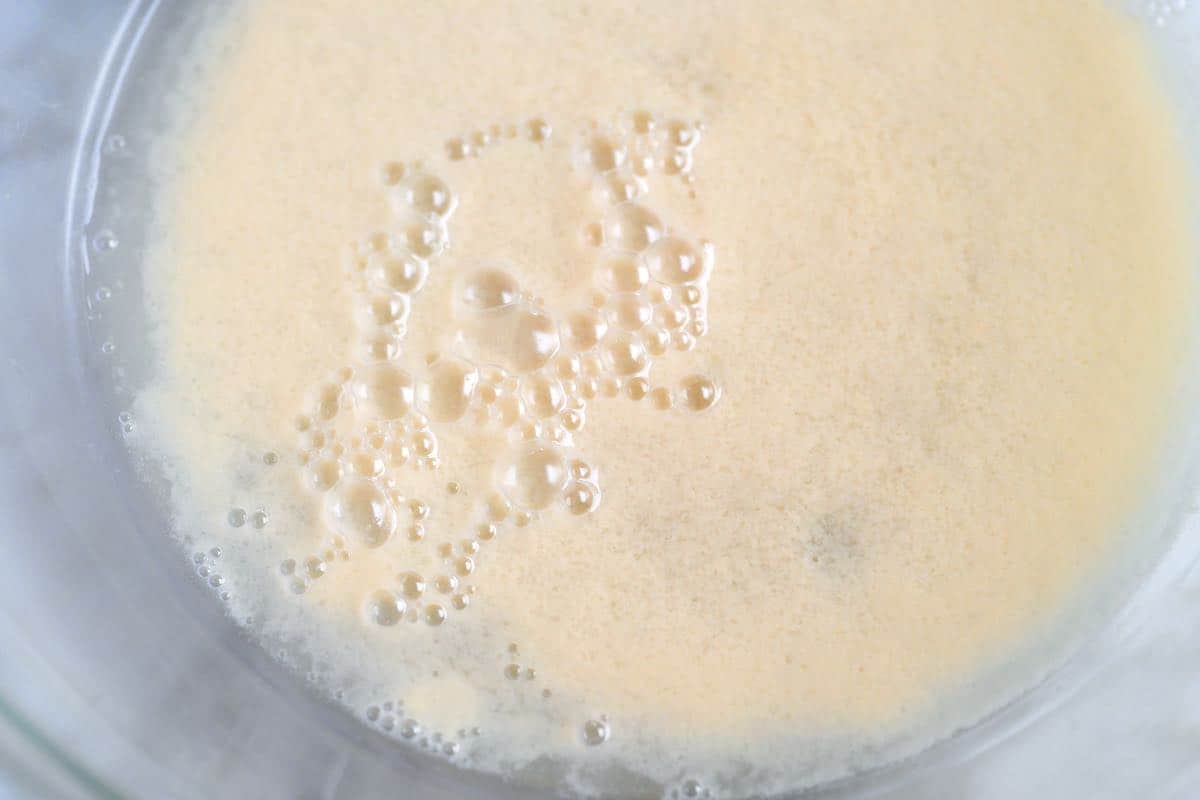
Once our dough has doubled, divide it into six equally sized portions. Roll each into a smooth ball, then flatten into disks. I use my fingers to flatten the dough to preserve as many air bubbles as possible. Let the dough rest, and then you are ready to cook them.
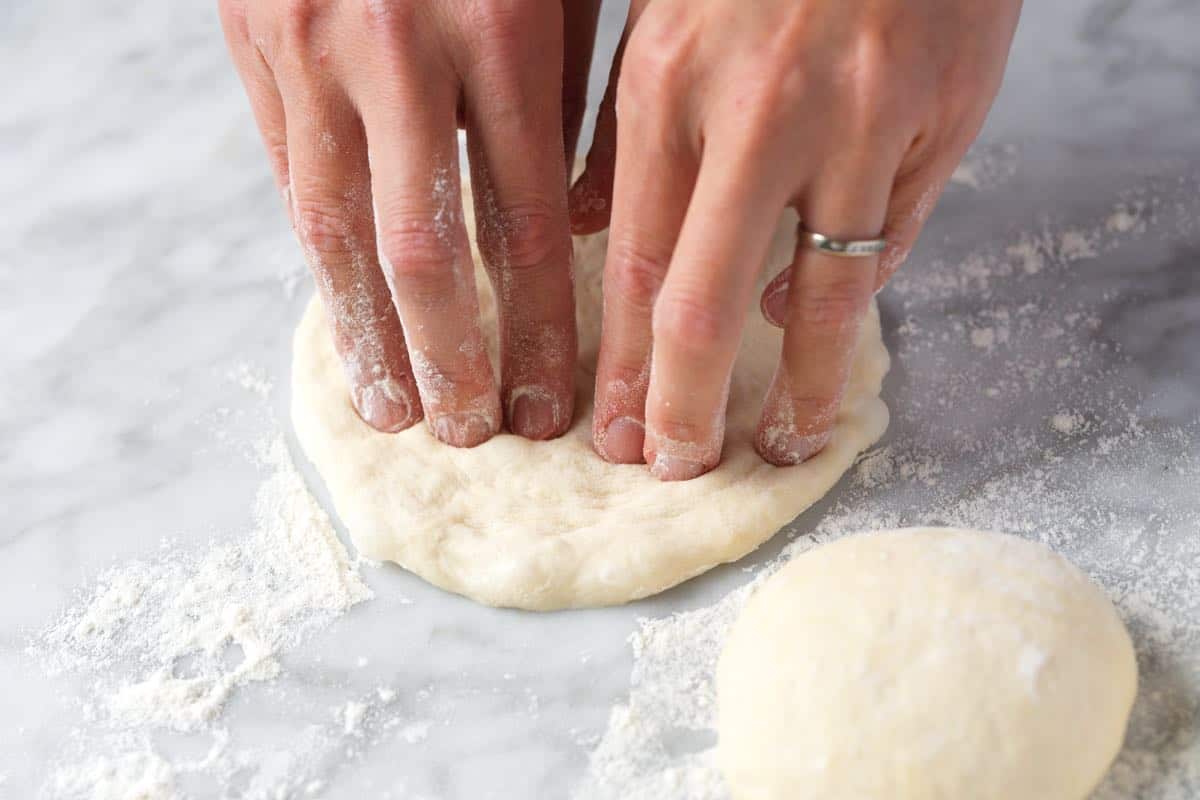
How to cook pita bread: on the stove or in the oven
You can cook pita bread in one of two ways: in a skillet on the stovetop or bake them in the oven. The skillet makes the softest pita without a big pocket in the middle, closer to what you see at Greek restaurants. If you’re looking for the big, tall pocket in the middle, bake them instead.
The photo below shows pita dough that was cooked in a skillet (top of photo) and pita baked in the oven (bottom of photo). The skillet pita is soft and fluffy, while the oven-baked pita has a pocket in the middle, perfect for making sandwiches. Both are delicious!
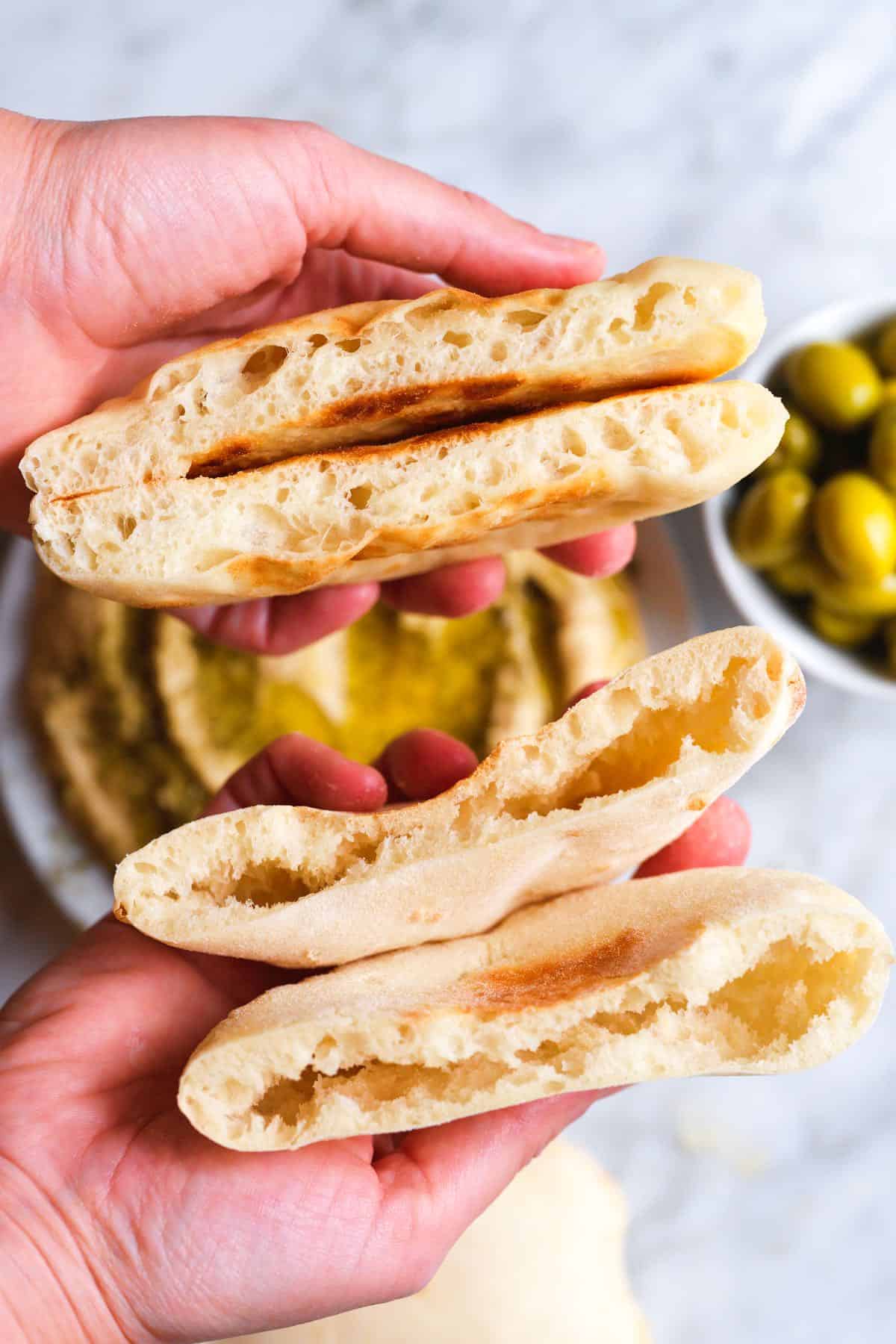
To cook pita bread on the stovetop, heat a heavy-bottomed skillet over medium heat, add some oil — I love avocado oil for this — and then cook the pitas until blistered on both sides and cooked in the middle.
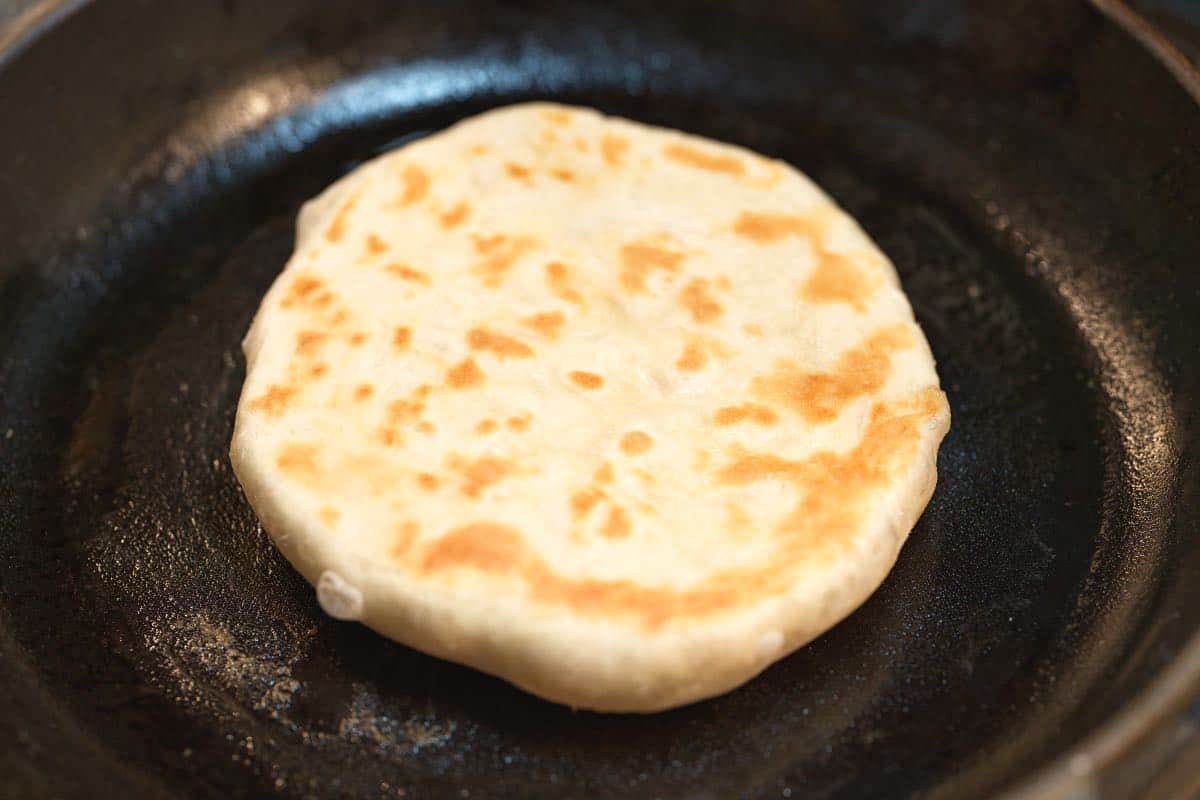
To cook pita bread in the oven, preheat your oven to 475 °F (246 °C). A hot oven is the secret to getting that pocket. I cook the pita bread on my pizza steel, which promotes the pocket even more. If you do not have one, place a baking sheet into the oven while preheating to mimic the baking steel.
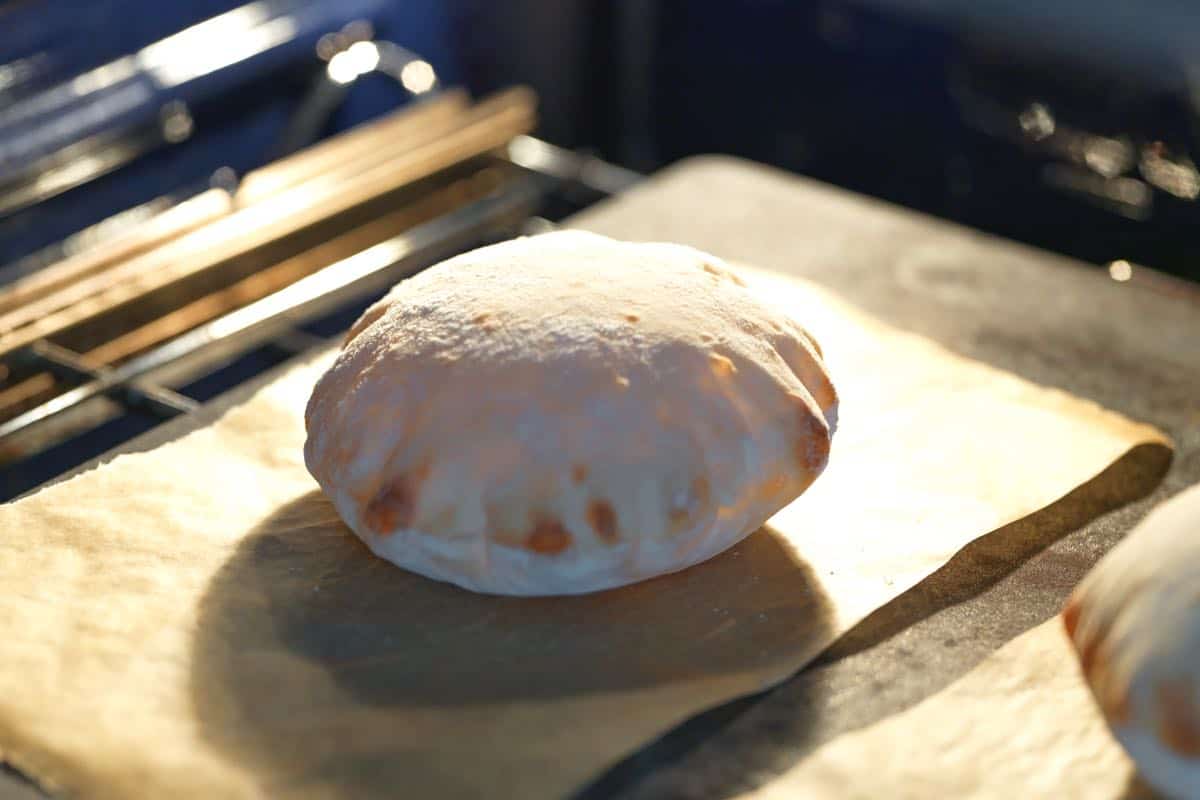
For baking pita, squares of parchment paper help move them to and from the oven. Lightly flour the squares of parchment paper and place the pita rounds onto them. When your oven is hot, transfer the pita on the parchment to the pizza steel or baking sheet, close the oven door, and bake until puffed and light brown around the edges.
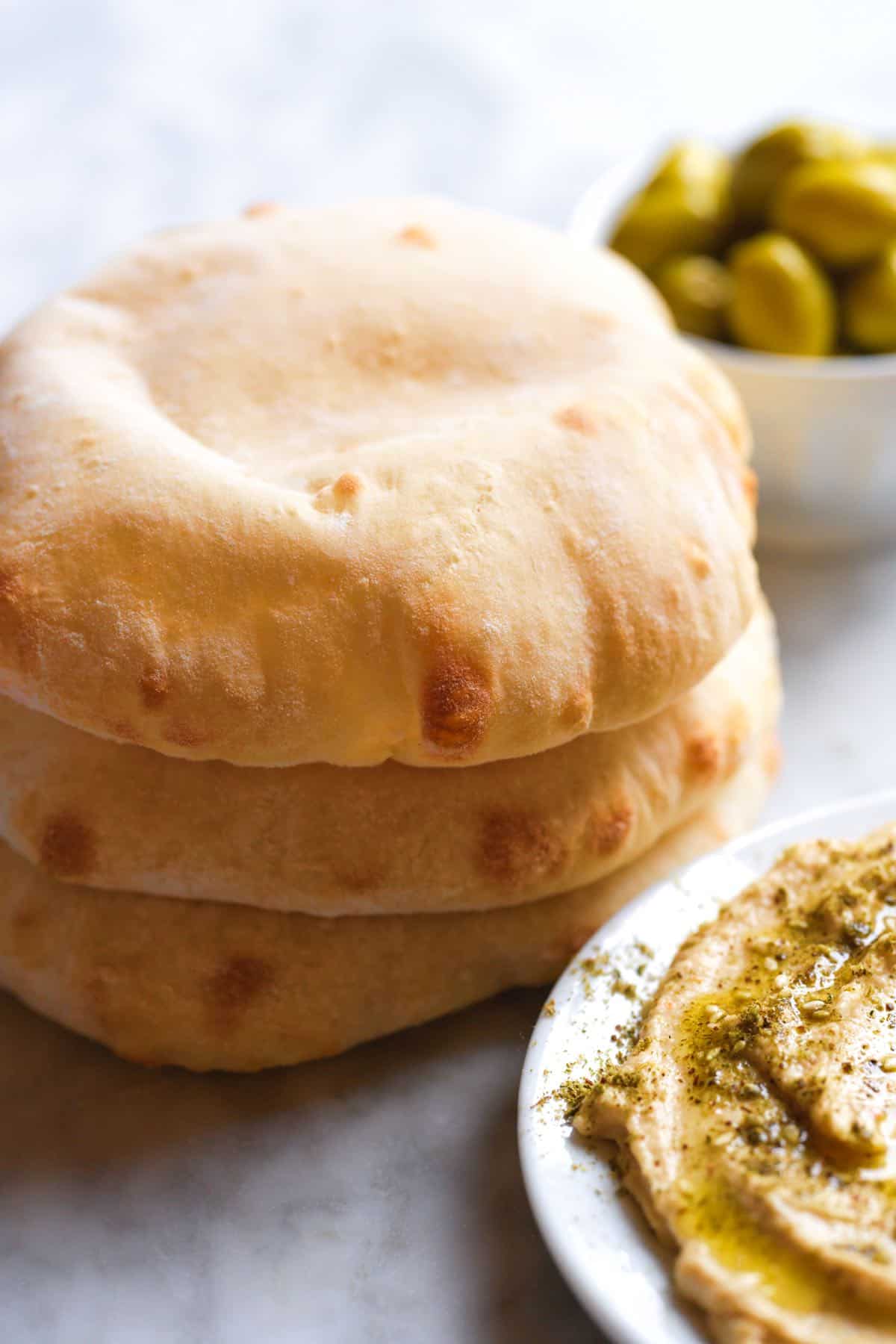
Make ahead tips
- Refrigerate dough: Make pita dough and complete the one-hour rise at room temperature. Rub the dough with olive oil and store it in an airtight bag or container for up to three days. Bring it to room temperature, then divide it into 6 equal portions. Continue the recipe as written.
- Freeze dough: Make pita dough and complete the one-hour rise at room temperature. Divide into 6 equal portions, then freeze the balls individually for up to one month. Thaw overnight in the fridge, then continue the pita bread recipe as written.
Storage tips for cooked pita bread
- Room temperature: Cool the cooked pita bread completely, then store it in an airtight container on the counter for up to 2 days.
- Freezer: Cool the cooked pita bread completely, then store it in an airtight container in the freezer for up to 3 months. Consider adding a piece of parchment paper between each pita to prevent them from sticking together as they freeze.
How to heat up pita bread
To warm up pita bread, simply bake it in a 350°F oven, wrap it in a damp paper towel, and microwave it, or heat it in a dry skillet on the stovetop.
Why won’t my pita puff?
If you’re having trouble getting your pita bread to puff up in the middle, make sure you’re using active yeast and that your oven has been preheated for at least 30 minutes. Stovetop pita bread is delicious but less likely to puff in the middle. For the best chance of achieving a pita pocket, we recommend baking them in an oven that has been preheated for at least 30 minutes.
What to eat with pita bread
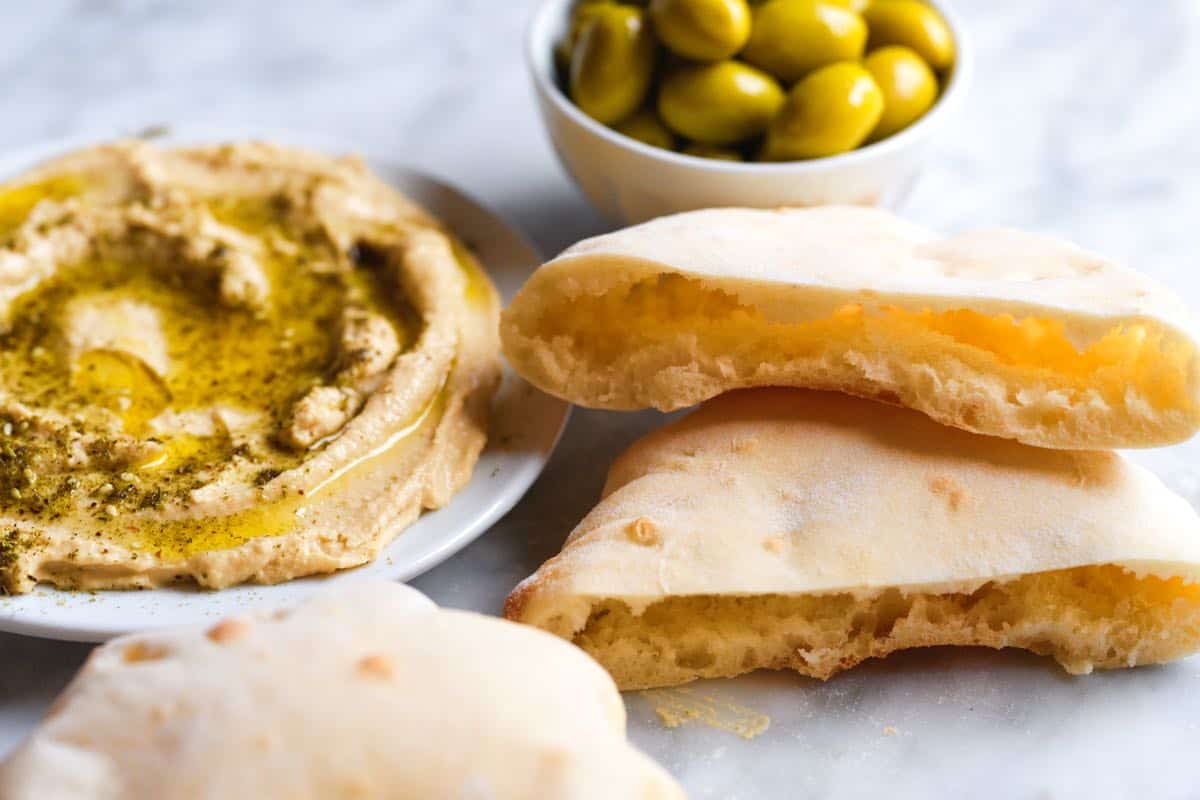
Easy Pita Bread (Better than Store-Bought)
-
PREP
-
COOK
-
TOTAL
How to make homemade pita bread that beats anything you can buy at the store. It’s easy! Bake them for perfect pita pockets. Or, cook them in a skillet for soft and fluffy flatbread. Pita cooked in the skillet will not puff as well as when baked in the oven, but they turn out so soft and fluffy. If I’m looking for a pocket for stuffing falafel, grilled meats, and veggies, I bake them. I love using the skillet when serving with dips like hummus.
Makes 6
You Will Need
2 ¼ cups (295g) bread flour or all-purpose flour
1 cup (236ml) lukewarm water, 110°F to 115°F
1 teaspoon (4g) instant yeast
1 teaspoon (4g) sugar
1/2 teaspoon (3g) fine sea salt
Avocado oil, optional for cooking in a skillet
Directions
- Make Pita Dough
1Add water, yeast, sugar, and salt to a large mixing bowl. Whisk to combine, then set aside until frothy, 10 to 15 minutes.
2Add the flour and mix until a shaggy dough forms. Knead the dough several times inside the bowl until you can form a rough ball – it will be sticky. Cover the bowl with a clean dish towel. Place the bowl in a warm place and leave alone until the dough has doubled, 45 minutes to 1 hour.
3Flour your work surface, then carefully empty the proofed pita dough onto it. Cut the dough into 6 equal pieces, roughly 85 grams each.
4If baking the pita, cut 6 squares of parchment paper, at least 6 inches on all sides. Preheat your oven now so it heats for at least 30 minutes before baking the pita (see temperature in “Bake the Pita” section below).
5Roll each portion of dough into a ball, dust a bit more flour underneath and on top. Cover with the dish towel and rest for 10 minutes.
6Using your fingers, press each dough ball into 6-inch circles, then cover them with a dish towel and rest for 10 to 15 minutes. If baking, place each circle onto a sheet of parchment paper, then cover them with a dish towel and rest for 10 to 15 minutes.
- Bake the Pita (for Pockets)
1Preheat the oven to 475° F (246°C) for at least 30 minutes before you plan to bake the pita bread. If you have a pizza stone or steel, place it into the bottom rack of your oven. If you do not have one, turn a baking sheet upside down and place it onto the bottom rack of your oven.
2Transfer the pita circles on their parchment paper to the oven. I can fit two circles on my baking steel. Bake until puffed with some golden spots, 5 to 6 minutes. Use tongs to transfer the baked pita to a bowl covered with a clean dish towel. Repeat with remaining pita circles.
- Cook Pita in a Skillet (for Soft Flatbread)
1Heat a heavy-bottomed pan, like cast iron, over medium heat. Add a drizzle of avocado oil, then place down a circle of pita dough.
2When the bottom has golden brown spots, carefully flip and cook the other side; the pita takes 2 to 3 minutes on each side. If they are over-browning and still doughy in the middle, finish them in a 350° F (176°C) oven for 5 minutes.
Adam and Joanne’s Tips
- Whole-wheat pita bread: Substitute 100% or half of the flour called for in the recipe with whole wheat flour. The result will be a slightly denser pita.
- Gluten-free pita bread: Traditionally, pita bread is not gluten-free. However, you can substitute the flour called for in our recipe below for a 1:1 all-purpose gluten-free flour blend, like the one from Bob’s Red Mill. It may not puff as well in the middle.
- Active dry yeast: I prefer instant yeast since it typically has more pep, but you can use active dry yeast in this recipe without any changes.
- Why I don’t use a rolling pin: When forming the dough circles, I use my fingers to press the dough thin. My fingers will not deflate the air bubbles in the dough as much as a rolling pin. If you use a rolling pin, take care to let the rolled dough rest for 10 to 15 minutes before cooking so it can recover a bit and puff up.
- Storing: Cool pita, then store in an airtight container on the counter for up to 2 days. Freeze for up to 3 months.
- Nutrition facts: The nutrition facts provided below are estimates. We have used the USDA database to calculate approximate values. We assumed baked pita bread.
Nutrition Per Serving
Serving Size
1 pita (6 total)
/
Calories
190
/
Total Fat
0.9g
/
Saturated Fat
0.1g
/
Cholesterol
0mg
/
Sodium
196.7mg
/
Carbohydrate
38.2g
/
Dietary Fiber
1.4g
/
Total Sugars
0.9g
/
Protein
6.4g


